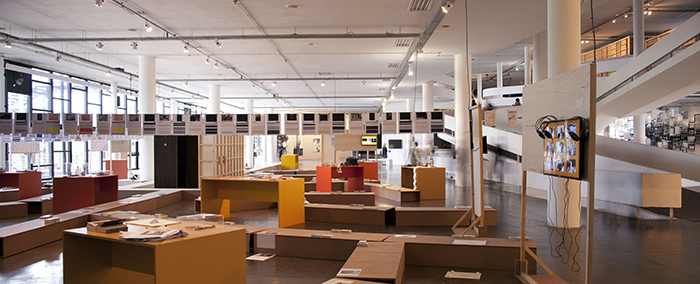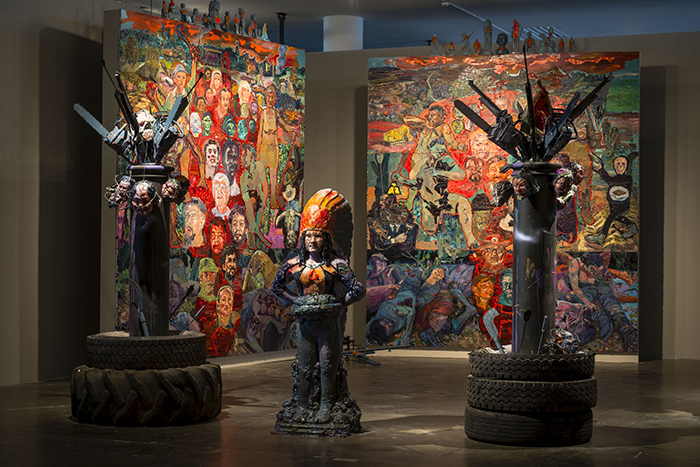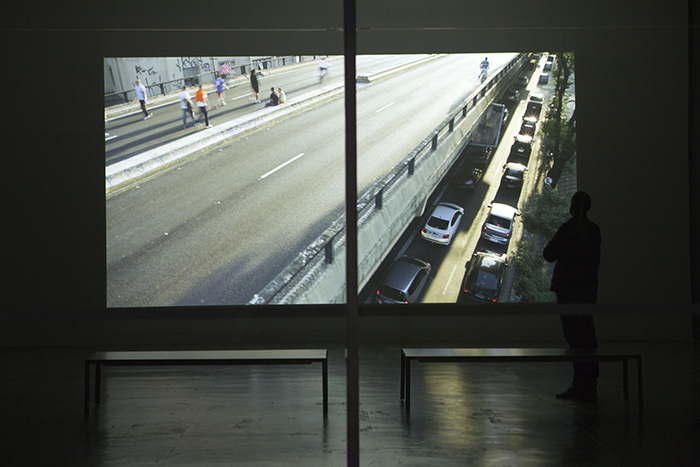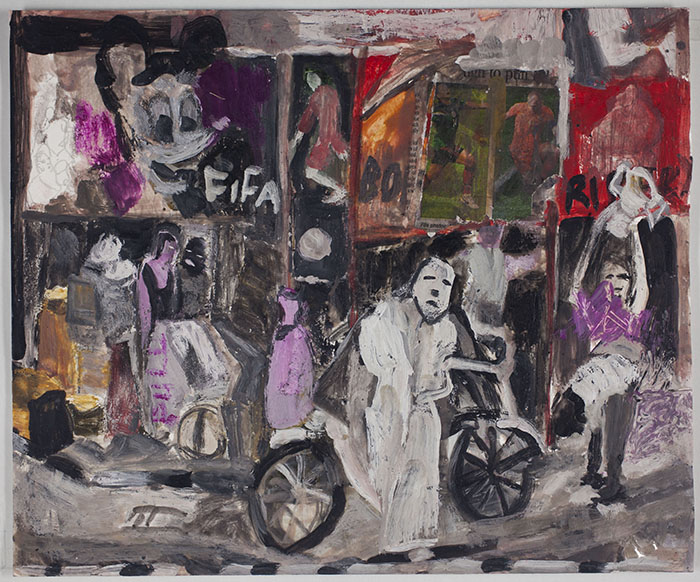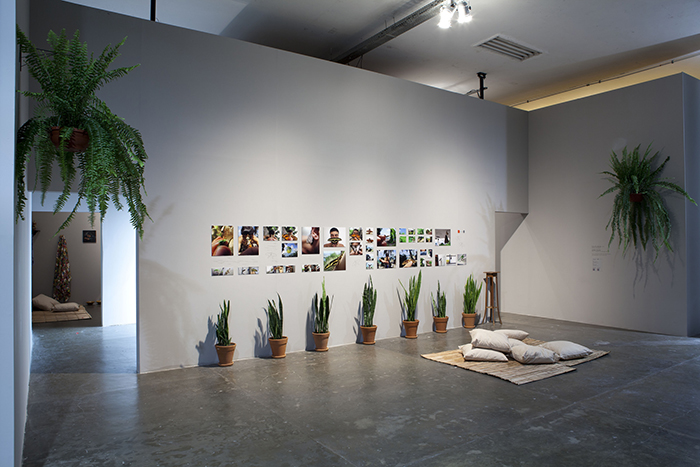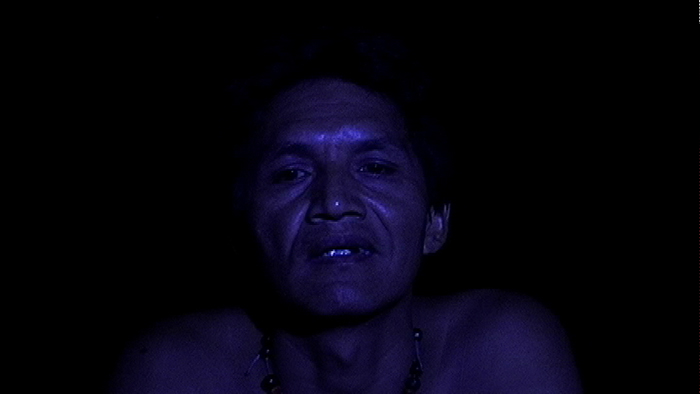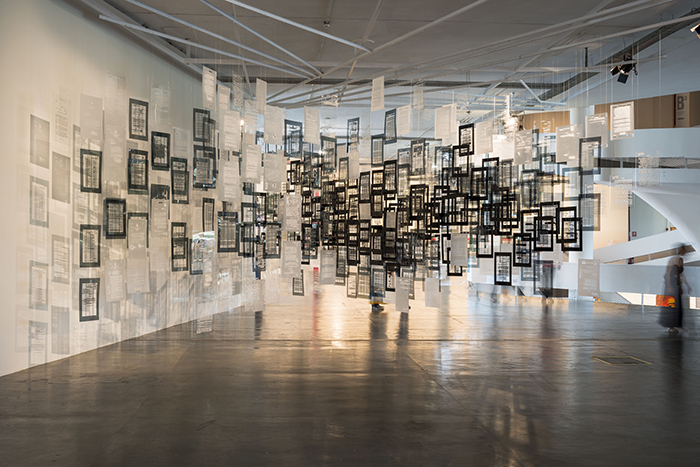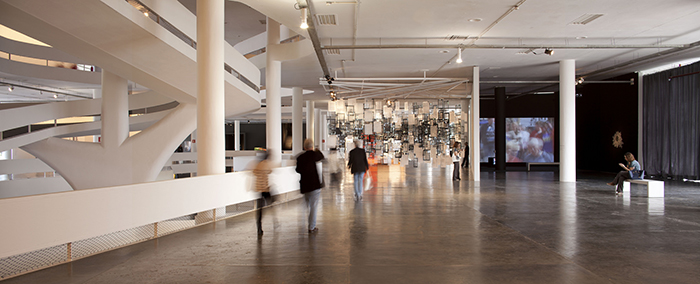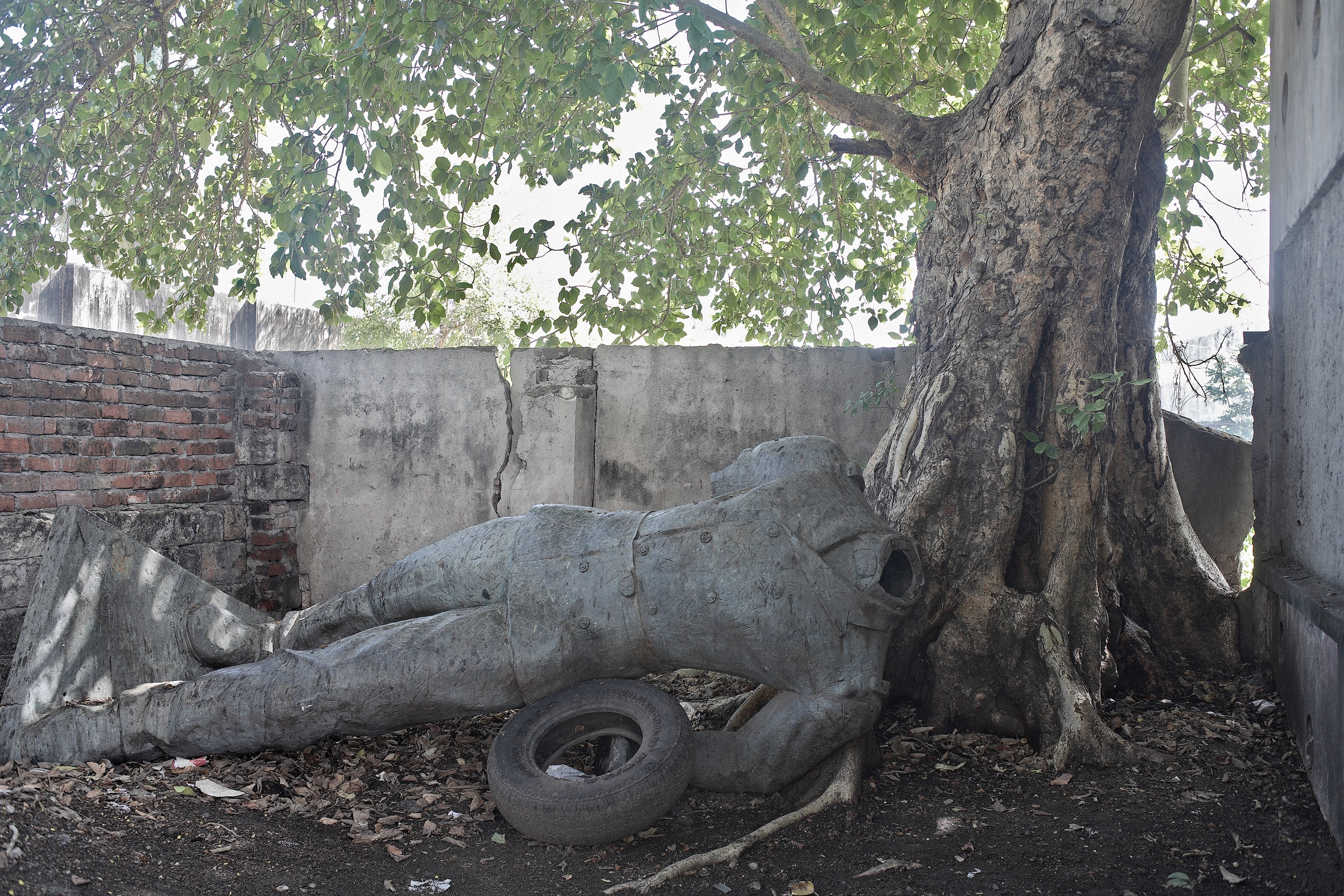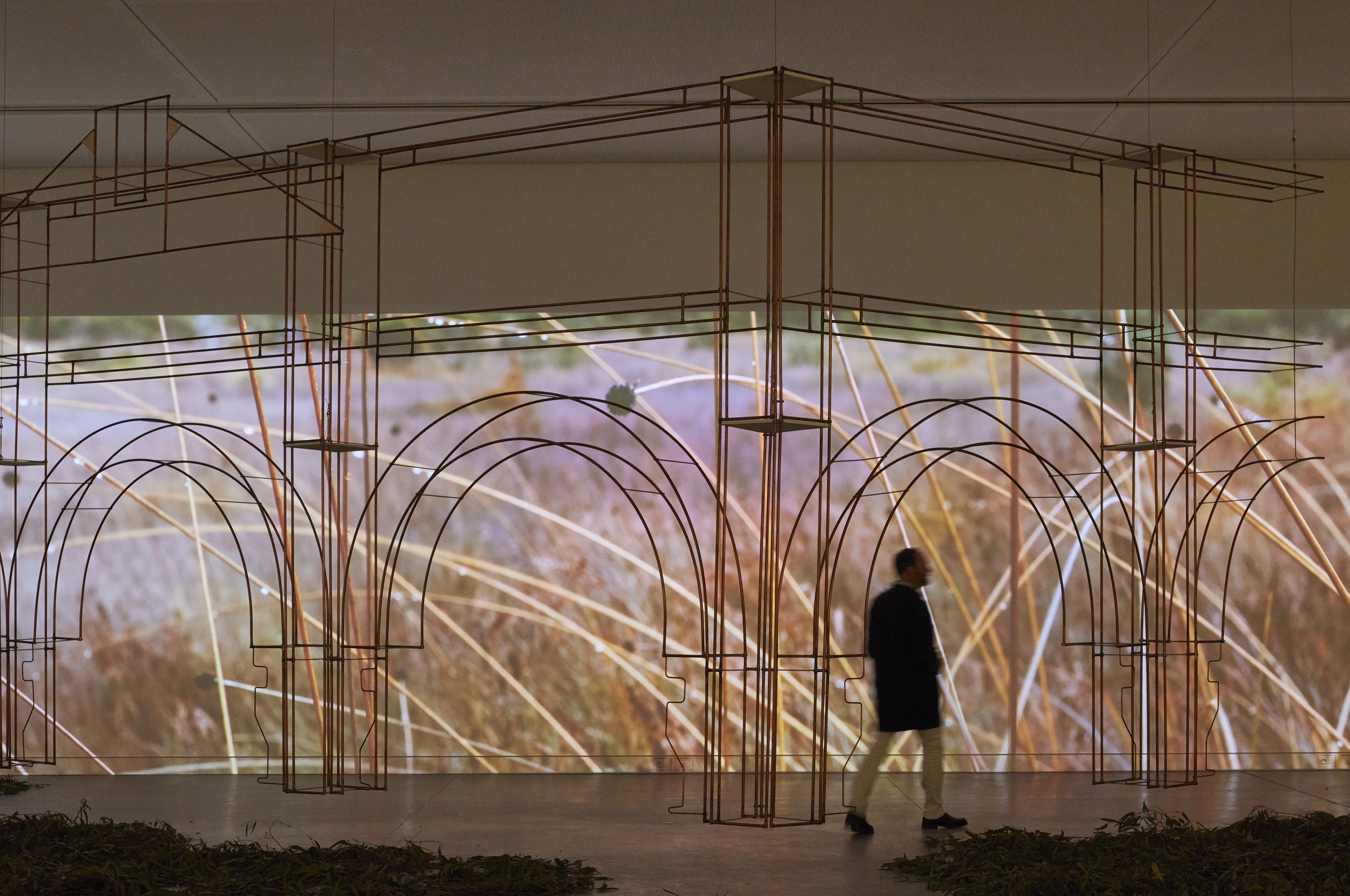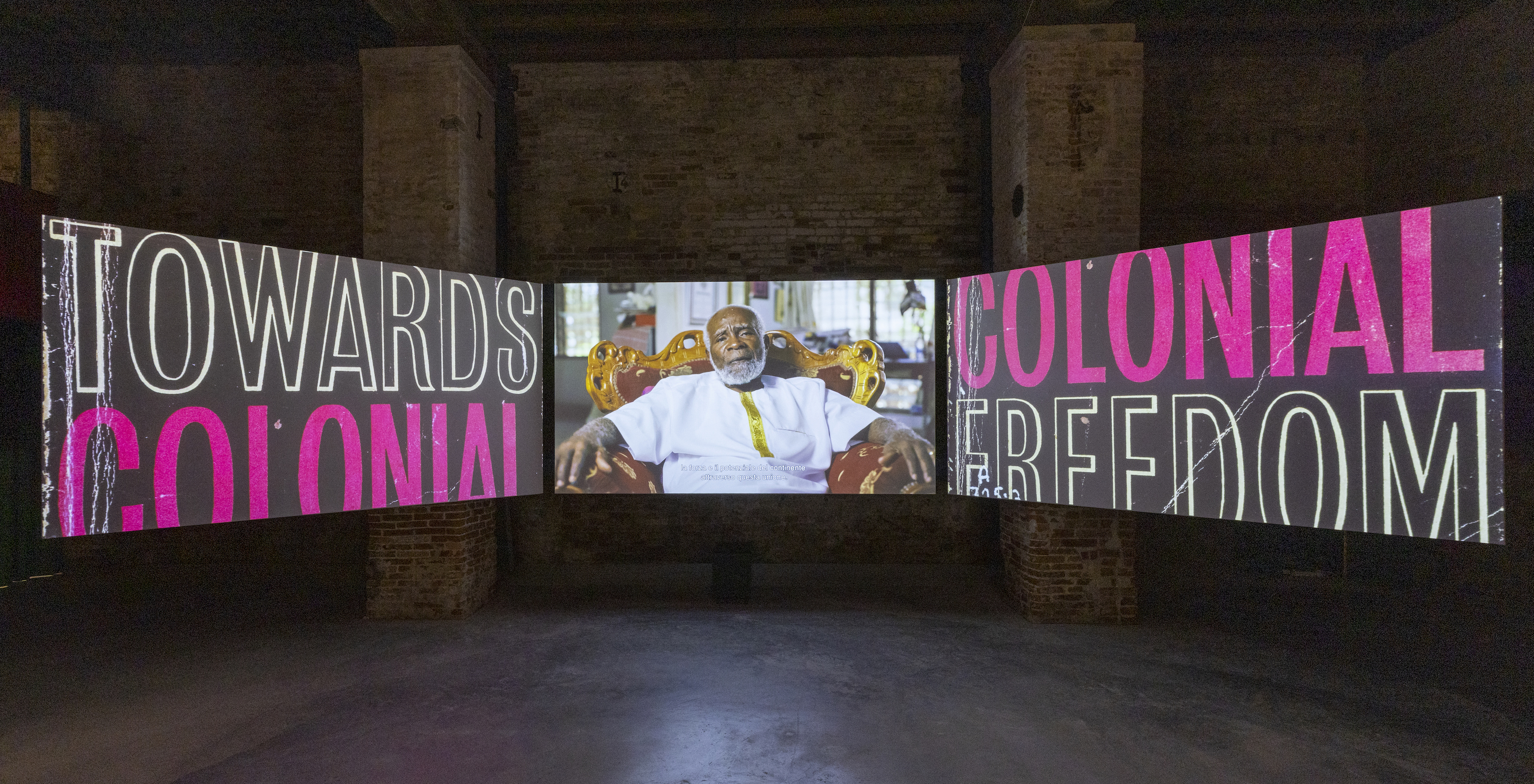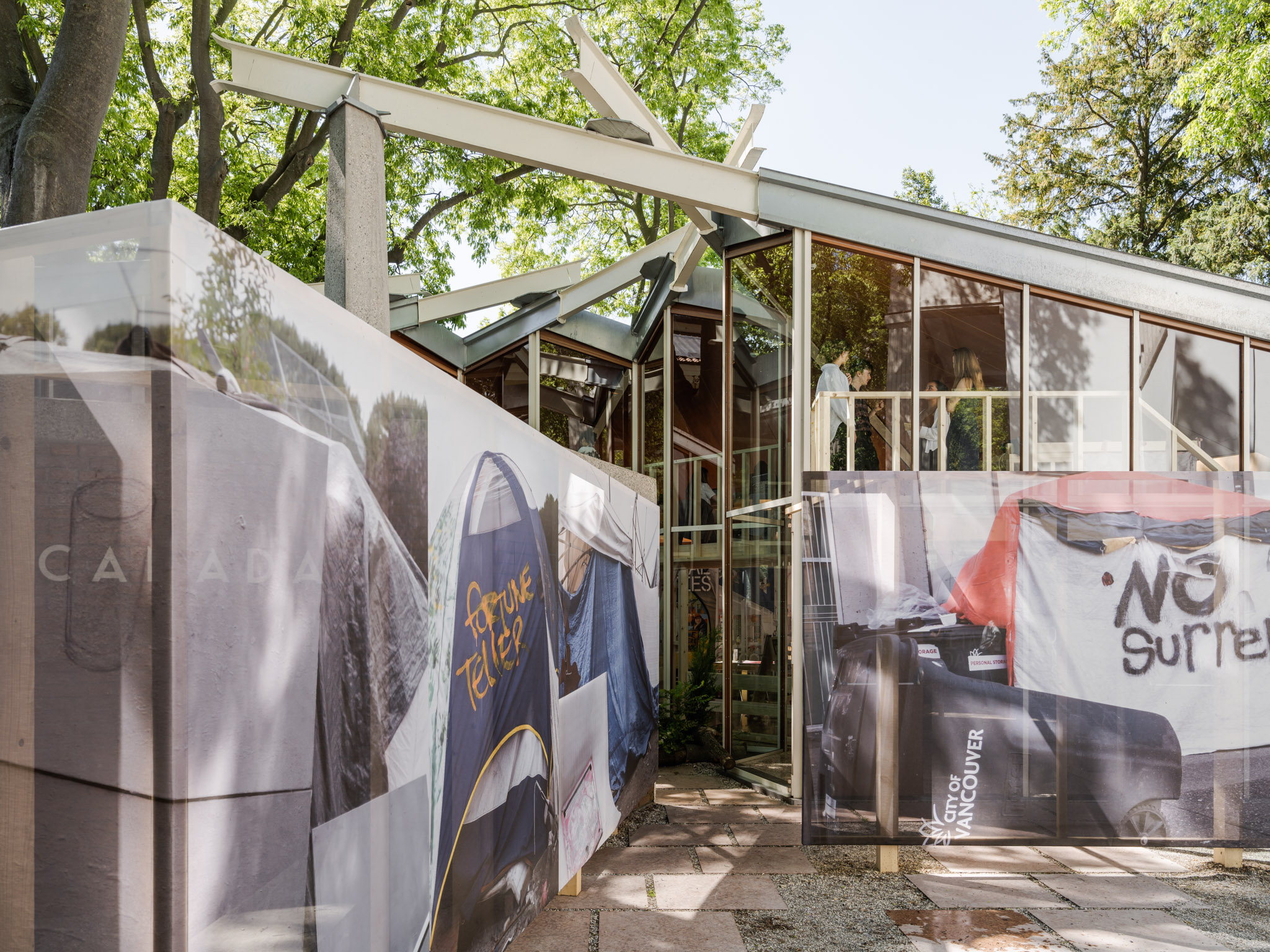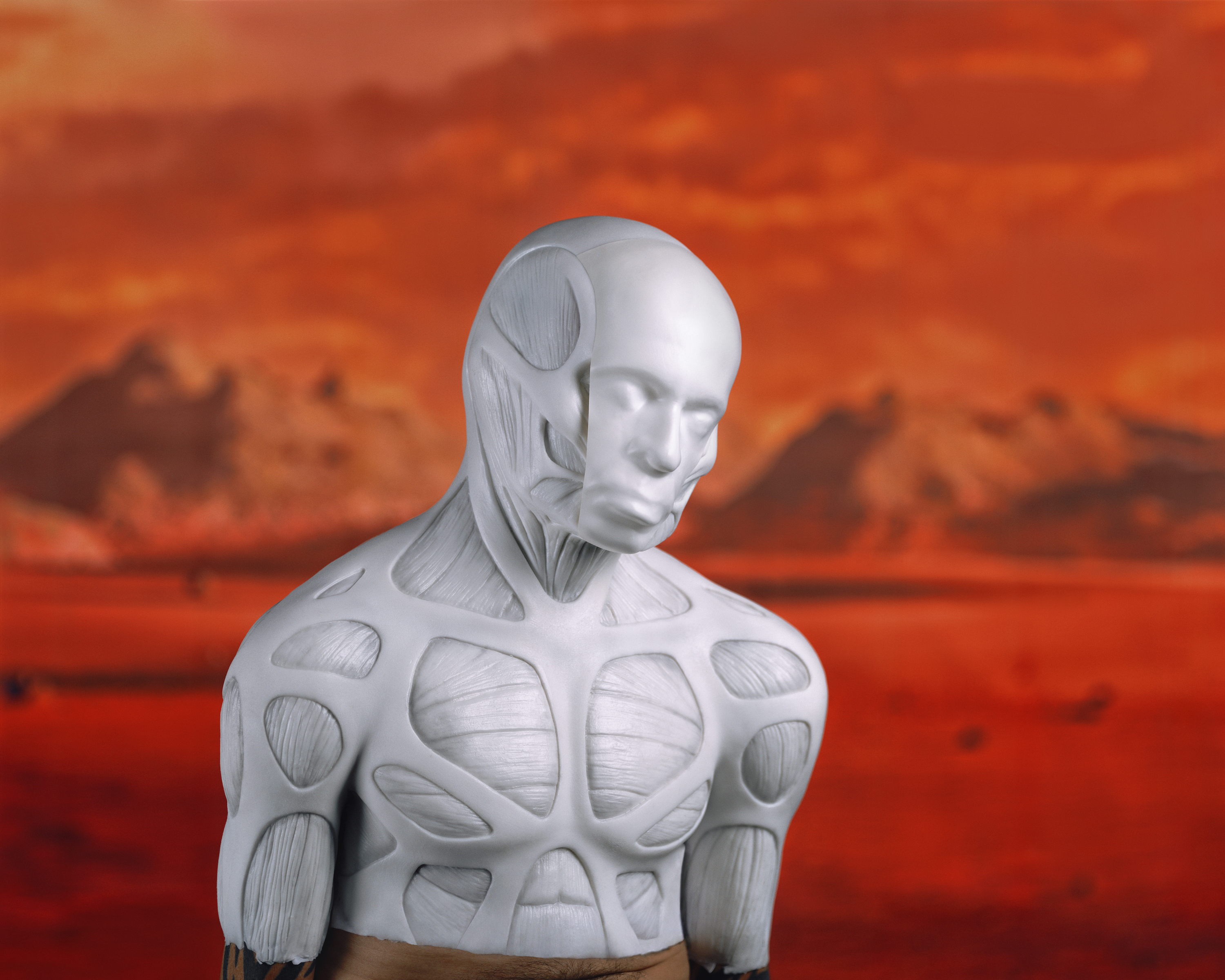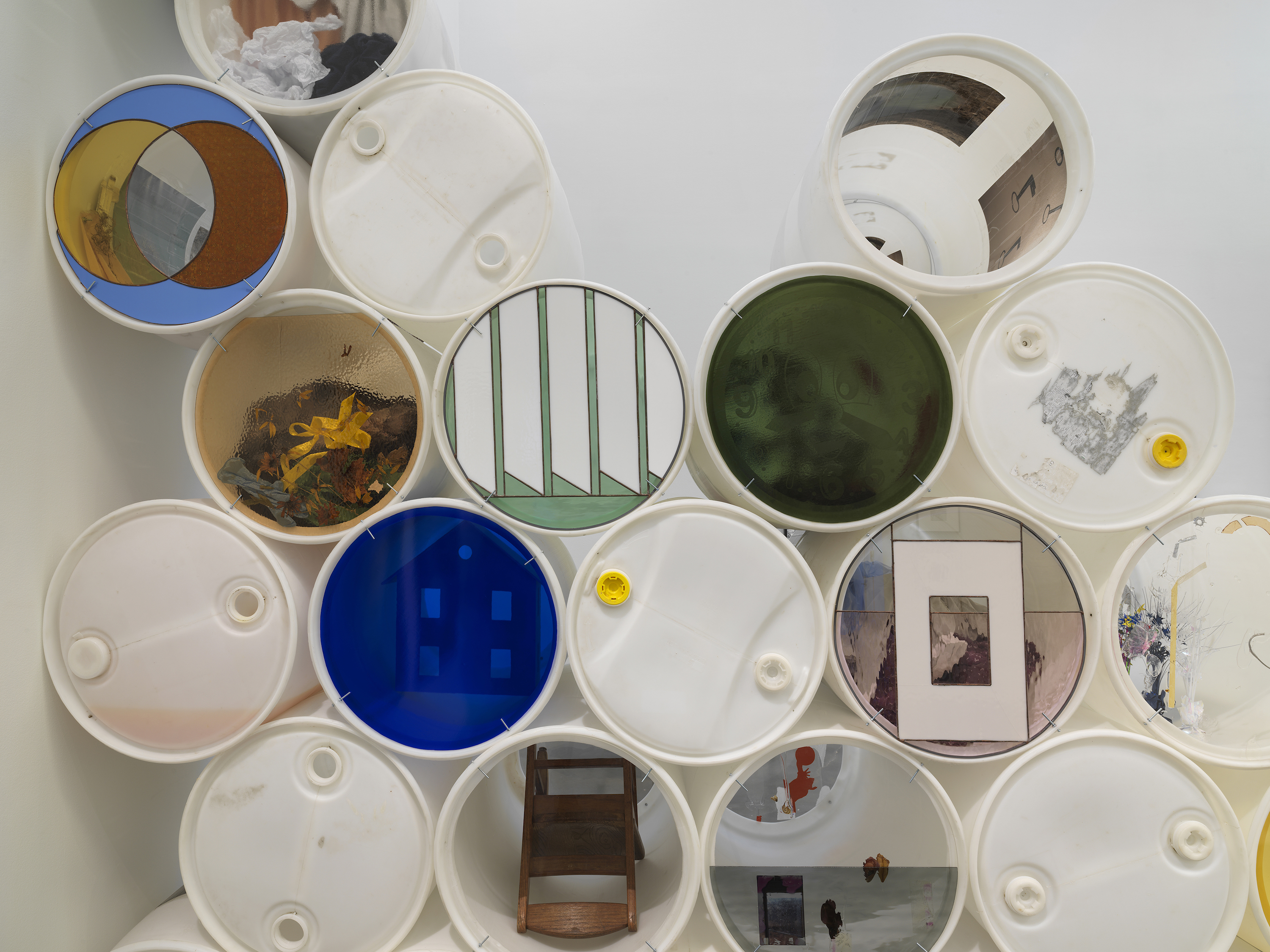September 6–December 7, 2014
When British curator Charles Esche moved to São Paulo to orchestrate this year’s Bienal—alongside Galit Eilat and Oren Sagiv (from Israel) and Pablo Lafuente and Nuria Enguita Mayo (from Spain)—he stressed that this is a show anchored on the now, on the goings-on that are shaping the world as we know it today. It just so happens that this very world has undergone seismic shifts since Esche and his team set foot in São Paulo, from the protests that shook the city and the rest of Brazil last year and became known as “the June uprisings” to the tumultuous World Cup and the upcoming elections with a campaign now on full throttle and jarred by the death of a candidate in a plane crash. Meanwhile, Israelis and Palestinians continue to fight on the Gaza strip, with a death toll up in the thousands. This latest episode fueled a protest that took the biennial by storm days before its inauguration. Artists launched a manifesto rejecting financial support from Israel, which afforded the country a logo among the biennial’s sponsors. While the curators titled the show “How to Talk About Things that Don’t Exist,” it appears that the things that do exist came through a little clearer.
It is not surprising, then, that there is a general feeling that things are ugly in this 31st edition of the Bienal de São Paulo. Not that art has to be pretty, but this ugliness really emphasizes that this is a show forged in the heat of the moment, born out of a feeling of restlessness and dissatisfaction, as though each artist tried to grapple with the very essence of a disquieting sense of anger in the making of their pieces and the result, with few exceptions, is works that are still in process. Some pieces were even finished on the eve of the opening day, like Martyrdom (2014), the massive paintings and sculptures by Thiago Martins de Melo, and Wall, Work, Worship. The São Paulo Drawing (2014), the erratic sketches on the pavilion’s glass panes by Dan Perjovschi, while others bear an uncanny sense of urgency, even those done months or decades ago. While this wet-paint impression seems to be an undertone of the show, another considerable number of works still stand up for the visual in the visual arts, albeit rather deceptively so.
A latent feeling of distress surfaces in the best works in the show. A piece that has already become an icon of this Bienal is Éder Oliveira’s red men painted on the walls of the first floor (Untitled, 2014), a huge mural of young shirtless boys peering out onto the exhibition space, their look something between scared and defiant. They are from Belém, the biggest city in Brazil’s Amazon region, and their photographs were published in local newspapers at the moment they were arrested. Oliveira has taken these snapshots and blown them up to the size of billboards, in a painting style reminiscent of old advertisements. His search for what he deems to be the archetypal man of the Amazon is thus underscored by criminality and social exclusion. There is also a homoerotic charge to these men, a sensuality in tune with how racial differences and the mystification of what it means to be white or black or red or yellow in Brazil has become somewhat of a marketable fetish in the latest academic discussions, with affirmative action policies being implemented in schools and a revival of Gilberto Freyre’s anthropological writings, identifying the roots of modern Brazilians’ appearance and behavior as the racial mixing of black, European, and Indian populations.
In thinking of what it means to be modern in a country like Brazil, this Bienal has made bold attempts at laying tropical modernity to rest. Its curators mention that this is the first edition of the show after Oscar Niemeyer’s death, and with this comes a need to resignify his signature pavilion, a landmark of heroic modernism built around the sensuous curves of its central ramp. This may be why the prime exhibition space of the pavilion, around this sinuous escalade, has been left empty, as though hinting at its now diminished significance. While the fantastic scale and monumental gimmicks in Niemeyer’s architecture give the feeling that Brazil has always been, and perhaps always will be, the country of the future, the layout of this year’s biennial seems to work against this logic.
As a counterpoint to the modernist utopia, Mark Lewis’s film installation Invention (ongoing), accessible via shopping-mall-style escalators that ride up to its near-secret, third-floor location, is an overdose of postmodernity. It resembles a glass temple, full of reflective surfaces that multiply images projected on three screens. One is an overhead vision of Minhocão, the elevated expressway that destroyed the urban fabric of downtown São Paulo when it was built in the 1970s; another is a slow descent down the fire escape of Niemeyer’s Copan building that alternates with a vision of the criss-cross of escalators at a busy underground station in the city, both ironic takes on the speed of contemporary life; the third, shown on a smaller screen, is an eerie walk through the dimly lit picture gallery at the São Paulo Museum of Art, the city’s flagship museum designed by Lina Bo Bardi and later ravaged by tasteless renovations undertaken by its current directors. Lewis, in the end, uses these fragmented images to diagnose a long-gone idealism while sabotaging Niemeyer’s pristine pavilion with corrupted examples of urban planning from this very city.
In a way, Oliveira’s brash figurative depiction of outlaws and Lewis’s cerebral take on the perversion of public spaces work as polar opposites in the show, one located way down at the bottom of the ramp and the other crowning high above everything else. The works in between seem engaged in a desperate quest to reconnect the present to ancestral roots, be it through religion—a dominating theme in the show, in works like Yael Bartana’s film Inferno (2013), Nurit Sharett’s film Counting the Stars (2014), and Etcétera’s series Erring from God (2014)—or the primal power of nature, from Anna Boghiguian’s painting Cities by the river (2014), an homage to the rivers of the world, to Arthur Scovino’s live act House of Caboclo (2014), an obsessive take on the life of butterflies—or the idea of the violated innocence of indigenous populations in Latin America, from Juan Downey’s videos The Abandoned Shabono (1977) and Video Trans Americas (1976), which document the artist’s journeys through the continent, to Armando Queiroz’s poignant film interview with an Indian man, Ymá Nhandehetama (2009), done in collaboration with Almires Martins and Marcelo Rodrigues.
Myths are reinstated only to be questioned, or to expose how feeble and fake individual and collective mythologies can be, especially when coupled with utopian desires. Kasper Akhøj and Tamar Guimarães’s installation of their film Captain Gervásio's Family (2013), for example, juxtaposes landmarks of modern architecture in São Paulo with healing sessions carried out by mediums in the heart of Minas Gerais, in southeastern Brazil. Yuri Firmeza presents one of the strongest works in the show, Nothing Is (2013–14), in which he seems to inhabit the past and the future at the same time. Shot with red camera filters, the film alternates between shots of a religious feast in Alcântara, a city in northeastern Brazil where, in colonial times, mansions that are now ruins were built in a rush to receive a visit by the emperor that never ended up happening, and images of the rocket-launching facilities installed there as a cornerstone of Brazil’s incipient space program.
A distinct mix of temporalities filters the viewer’s experience of the show, including an excess of works that overwhelm visitors with pages and pages of archival text. However, a work like Voluspa Jarpa’s massive installation Learning Histories (2014), which displays a large quantity of pending sheets of acrylic that reproduce secret CIA documents concerning the Brazilian dictatorship, attracts the viewer’s attention with its dazzling transparencies dangling from the ceiling. As the light goes through them, or the plastic is at points thicker or thinner, the text on these panels becomes nearly impossible to decipher. This is perhaps the crux of the show, a piece in which the spectacle of art appears to make opaque all the destruction inherent in politics and archives become pure fetish—ghosts that are there not to be read, but to reassure us that they’re there. It is this transparent avalanche that might be able to teach us a thing or two about all those things that don’t exist.
